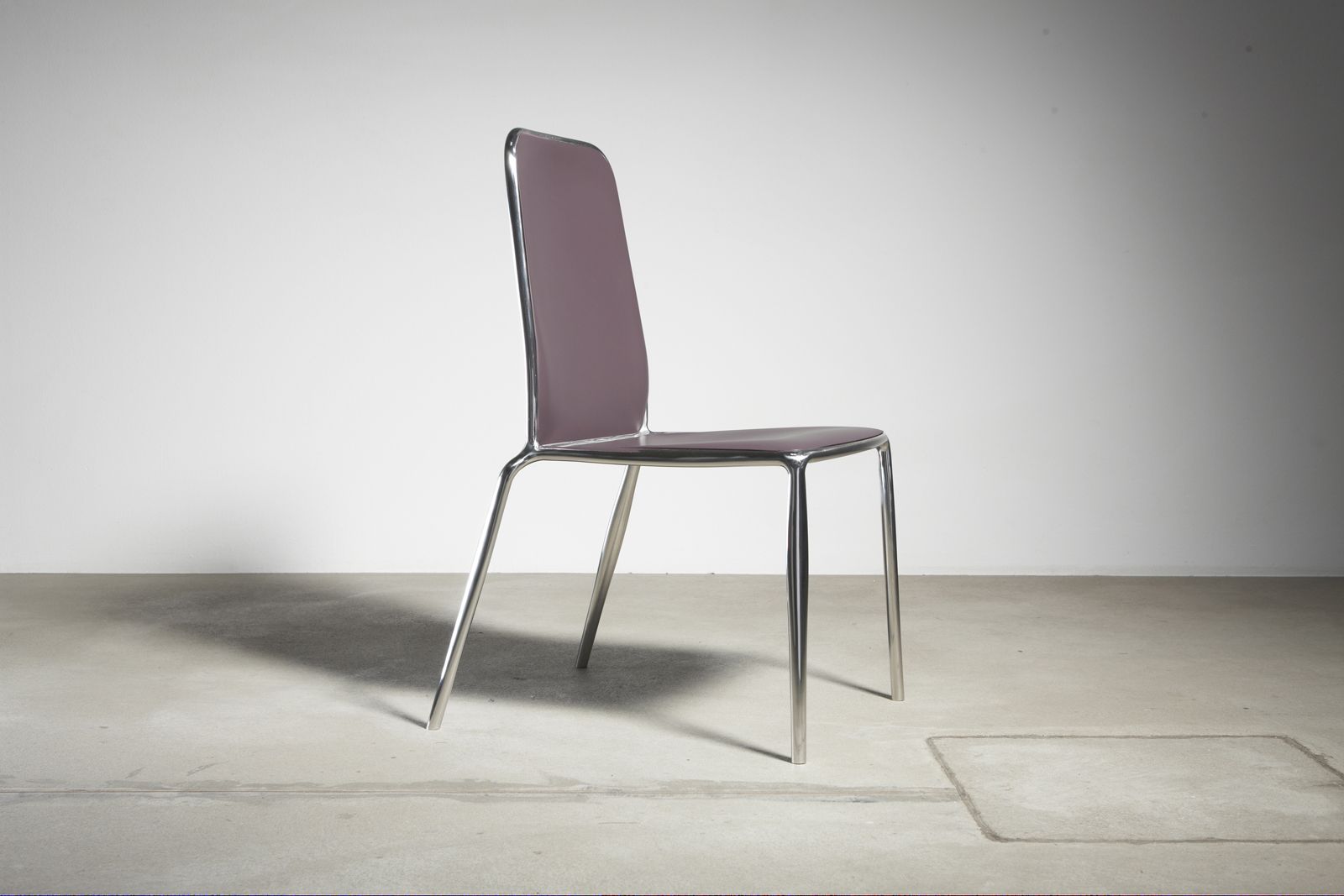When design and technology form an alliance
Designers love state-of-the-art production technologies. This is the story of how a young designer worked with researchers from Fraunhofer to manufacture the Hydra steel tube chair. This chair is not only lightweight, but also sturdy because it takes a cue from natural forms.
Jörg Höltje from Studio Hausen in Berlin, Germany created a steel tube chair that takes its cue from organic forms in nature. This seat is lightweight and still sturdy and, as he emphasizes, “This chair is designed to be something akin to a bone because the steel tube has greater volume at highly stressed points.” Although he made it generally as thin as possible to lend the chair a special elegance, he also gave it differing thicknesses at various points. His comment: “The legs and the sections of the lateral parts of the chair have thicker portions that look organic and remind you of calves or muscles.”
You can design a lot of things on paper, but how can you produce a chair like this in real life? This was the problem that Rico Demuth tackled. He is a project manager at the Fraunhofer Institute for Machine Tools and Forming Technology in Chemnitz, Germany. Rico knows that “It would only have been possible to apply the conventional technology of milling to building the individual components. That would have meant that the components were solid, not which isn’t what the designer wanted.”
Therefore, researchers at the Fraunhofer Institute for Machine Tools and Forming Technology put their heads together with Jörg to outline a manufacturing process for this chair. Rico remembers “We finally selected the next-generation technology of hydroforming for the legs and frame construction.” This is a technique that previously was used mainly in the automobile industry where a pipe filled with water is formed by controlled increase of inside pressure. It is in a tool that specifies to him the exterior contour that is calculated in advance according to CAD data. In this process, the tube can change its diameter without cracking. With other manufacturing methods, the diameter of the steel tube does not always stay the same and it can only be bent. The seat of the chair is manufactured with a similar method: inside high-pressure sheet metal forming where researchers press the sheet-metal components into the desired shape with the pressure of water inside of a tool.
Hydroforming and inside high-pressure sheet metal forming technologies enabled Höltje to give the elements of his chair an elegant contour, form branches and let the object’s structure look as if it were organically grown. This required full-fledged development work between the designer, engineer Demuth and the department head Markus Werner and his team. And the researchers were even successful at manufacturing the corner components of the frame with the hydroforming method. The only thing that was manufactured by bending was the frame of the back rest.
There are even a couple of prototypes of the chair they built and they illustrate both the technical possibilities and the aesthetic ingenuity of the hydroforming technology. The researchers at the Fraunhofer Institute for Machine Tools and Forming Technology and the artist created a dialog to launch a project that sounds out the opportunities and potential of this technology for a wide range of new applications in the furniture industry. It is no wonder that chair experts have shown great interest in the Hydra at the fairs where it has been shown to the public.
